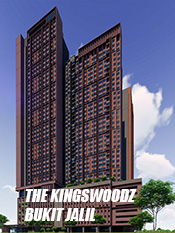Nevertheless, every stakeholder, whether they are common folk, government or private organisations, has to contribute towards ensuring a more sustainable environment.
With the Government’s move to review the uniform building by-laws to promote the adoption of more energy-saving and environmental sustainable measures for buildings, there will be more environment-friendly developments in the future.
The initiative to ensure new buildings feature energy-saving and other pro-environment measures is a good way to promote the green culture among industry players. After all, built structures make up almost a third of total energy consumption in the world today.
In Malaysia, developers are still weighing the costs and benefits of going green as many are concern that it will result in higher costs for their projects.
That explains why it is still early days for Malaysia’s green building initiatives and there is just a handful of such buildings at the moment.
Developers should be championing the green way of building as they are responsible for the planning and opening up of new corridors. Being a tropical country rich in flora and fauna, there are many opportunities for developers to preserve as much of the natural habitat as possible.
Whether projects are residential or commercial, buildings should adopt environment-friendly features such as natural ventilation for cooling, rain harvesting and conservation of original land form and vegetation.
Buildings should also be built with sustainable construction methods and materials. Although the cost of developing a green building may be more than that of a conventional building, the savings in operational costs would make it cheaper in the long run.
A building constructed with the right green designs and features, can reduce energy cost by 50%, which is a substantial saving as energy makes up 25% of a building’s operating cost.
Although green technologies have progressed quite well, much of the technology and materials used are still mostly imported.
Malaysian companies that have the know-how should venture into producing green technology building materials such as recycled content for floor finishes, photovoltaic systems and mechanical and electrical equipment.
Having a home grown rating tool in the form of the Green Building Index (GBI) is a also good start.
The GBI spells out the importance of energy-efficient design, indoor environmental quality, sustainable site planning and management, using the right materials and resources and water efficiency and innovation.
With the GBI in place, buildings can now be assessed and guided to reduce and minimise their impact on the environment.
But the contention by developers that the market may not be ready to pay the high fees for the GBI accreditation may undermine an otherwise worthy initiative.
Greenbuildingindex Sdn Bhd is a wholly-owned subsidiary of the Malaysian Institute of Architects and the Association of Consulting Engineers.
The assessment fees charged range from RM5,000 to more than RM100,000 based on the category and size of the building or property.
To promote the GBI accreditation among developers, the fees charged should be scaled back to make it more affordable. If the total development costs of a project escalates due to the GBI accreditation, buyers will have to pay more for their “green” property and this will not go down well with them.
If all goes well, green-accredited buildings will become sought after, especially if these buildings are able to fetch higher premium in terms of capital value and rental rates compared with non-green compliant buildings.
Deputy news editor Angie Ng believes the green way of living and industry practices will be a great elixir for Mother Nature.
By The Star (by Angie Ng)










No comments:
Post a Comment